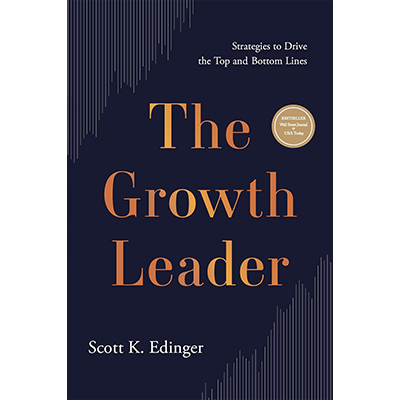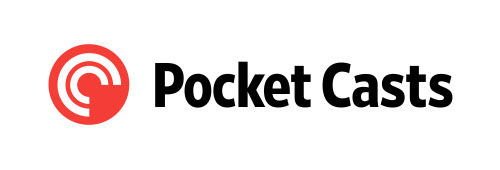 In this insightful episode of Inside Personal Growth, host Greg Voisen sits down with Scott Edinger, a business growth consultant, speaker, and the author of The Growth Leader: Strategies to Drive the Top and Bottom Lines. Together, they explore how businesses can achieve sustained growth through the intersection of leadership, strategy, and sales. In a world where businesses constantly strive for market dominance, Scott underscores a critical message: growth is not just a sales challenge but fundamentally a leadership issue.
In this insightful episode of Inside Personal Growth, host Greg Voisen sits down with Scott Edinger, a business growth consultant, speaker, and the author of The Growth Leader: Strategies to Drive the Top and Bottom Lines. Together, they explore how businesses can achieve sustained growth through the intersection of leadership, strategy, and sales. In a world where businesses constantly strive for market dominance, Scott underscores a critical message: growth is not just a sales challenge but fundamentally a leadership issue.
Leadership and Sales Alignment: A Key Driver for Growth
One of the central themes of Scott’s discussion is the need for leadership and sales alignment. Too often, companies focus on the tactical aspects of sales—like closing deals—without acknowledging the strategic role that leadership plays in enabling sales success. According to Scott, growth happens when leaders create an environment where their sales teams are not just selling products but delivering value. This value-driven approach is what differentiates successful companies from those that struggle to grow. Scott poses an important question for business leaders: Are you selling what you want to whom you want, or are you selling whatever you can to whoever you can? The answer to this question determines whether sales efforts are strategic or merely transactional.
In today’s competitive landscape, it’s no longer enough to have an exceptional product or service. Sales teams must be equipped with a clear strategy that aligns with leadership’s vision and organizational goals. The sales process, Scott explains, is essentially the execution of a company’s strategy in the marketplace. Every interaction with a customer or prospect is an opportunity to demonstrate the company’s value proposition. As a leader, it’s your responsibility to ensure that your sales teams are empowered to execute the strategy effectively.
Why Sales Is a Leadership Issue, Not Just a Sales Issue
Scott is adamant that growth must be viewed through a leadership lens. He challenges the conventional wisdom that sales and leadership are separate functions. In reality, they are deeply intertwined. Leadership sets the tone for how a company approaches the market, and sales teams are the ones who bring that strategy to life in front of customers.
Scott shares an important statistic: only 14% of CEOs are actively engaged with their sales teams. This low level of engagement reflects a widespread belief that sales is not a strategic function but merely an operational necessity. Leaders often prioritize innovation, product development, and finance, while neglecting the importance of sales strategy. However, Scott argues that this mindset is flawed. Sales should be viewed as a critical component of a company’s strategic plan, and executives must actively participate in shaping the sales experience to ensure it delivers long-term growth.
The Butterfly Effect of Leadership Actions
Scott introduces the concept of the “butterfly effect” in leadership, where small actions by leaders can have significant downstream effects on sales performance and overall growth. He points out that if leaders are dissatisfied with what they are seeing from their sales teams, the first place to look is in the mirror. The behaviors that sales teams exhibit are often a direct reflection of how they are led and managed.
Scott advises leaders to focus on removing what he calls “sales stigma”—the idea that sales is merely about distribution and not a source of differentiation. By treating sales as a strategic differentiator, leaders can change the way their teams approach the market, resulting in improved performance and greater customer loyalty. It’s about shifting the mindset from distribution to differentiation, where the way salespeople interact with customers becomes a key reason why the company wins deals.
The Five Flags Framework: A Blueprint for Strategic Growth
In The Growth Leader, Scott introduces the Five Flags Framework, a simple yet powerful tool that helps leaders develop and execute a clear go-to-market strategy. The framework is built around five key questions that every leader should be able to answer:
- What are our objectives?
- What is our competitive advantage (power play)?
- Who is our ideal client profile?
- How does our sales experience create value?
- What do we need to improve, build, or acquire to execute our strategy?
Scott emphasizes that by answering these questions with clarity and precision, leaders can create a strategy that aligns their entire organization around a common goal. This not only drives sales but also ensures long-term, sustainable growth.
Final Thoughts and Takeaways
Scott Edinger leaves listeners with two key takeaways from his book:
- Growth is a leadership issue, not just a sales issue. Leaders need to be actively engaged in shaping the sales strategy and ensuring that their teams are delivering a value-driven experience.
- The sales experience is a critical component of competitive advantage. Companies that focus on delivering a differentiated sales experience will be more successful in attracting and retaining customers.
To learn more about Scott Edinger and his insights on leadership and growth, visit his website here and follow him on YouTube, LinkedIn, and Twitter/X. You can also purchase his book The Growth Leader: Strategies to Drive the Top and Bottom Lines on Amazon.
You may also refer to the transcripts below for the full transciption (not edited) of the interview.
Greg Voisen
Welcome back to another episode of Inside personal growth. This is Greg voisen, the host of inside personal growth. And you are joining us. If I remember correct, it's in Florida. Is that correct? Tampa? Florida? Tampa, Florida, and we have a returning author, Scott Edinger, and Scott has a new book out that we're going to be talking about today, called the growth leader. And the subtitle is strategies to drive the top and bottom line. And I think in the world that we live in today, Scott, this is a very timely topic for all of those people that are growing a business, growing a sales team, and just overall, trying to continue to innovate and keep pace, right? Yeah, and it always is, but it seems a little bit more focused on today, which is why you, I'm going to say this kind of own this space. You're the person who's out there. You did a podcast with us, and we'll let the listeners know, because I'm pulling it up podcast 524 back in July, 2015 and it was called the hidden leader, and you've been writing on this topic for some time, but I'll let my listeners know that clients in the Fortune 500 and across the globe have trusted Scott as a premier consultant for leading business growth. Scott has worked with CEOs and senior leaders to develop pragmatic solutions and execute approaches to drive top and bottom line results. He's written three books and over 100 articles in Forbes and Harvard Business Review, among other prominent publications. As a consultant, author, advisor and speaker, Scott creates positive change for clients and is recognized as an expert in the intersection of leadership strategy and sales. He has all kinds of accolades. You can go up to his website and look up more about him. The book itself does not have a website. Is that correct? Or does it
Scott Edinger
Scott That's correct? Just on my website.
Greg Voisen
Just go to Scott edinger.com, so look, the most important thing here is really, you know, you see people that are, say, their evangelists, or the chief growth officer. There's a lot of people that you know do this. And in your book, you mentioned that the leaders of these organizations overlook the role of the sales organizations and driving strategy. And I would say that's true. Look, you got a marketing department, you got a sales department, you got all these people that are trying to align, how can leaders better align sales with those strategic goals and your estimation, because that's what drives growth. But there are many of other things that drive growth, such as innovation, creativity, all kinds of things. So speak with our listeners about that.
Scott Edinger
Yeah, well, I start with this premise. You know, I've worked in leadership and strategy and sales separately for for years treated as wholly separate areas of focus, but over time, I did start to see more and more that the real power to drive growth lies at the intersection of all three when leaders can think about those three things and consider them together. Leadership at its core, particularly if you're listening and you're part of a commercial organization, you know, some kind of business, the objective is always growth of some kind, right? So there's a lot of ways you can measure that growth from revenue net income to market share, or even measures of customer loyalty net promoter score, but whatever it is, growth of some kind is always the objective for the leader, and if you have even a significant part of that growth coming from a sales organization, then growth and sales are inextricably linked. But too often, executives in particular, as you mentioned, they overlook the role of sales because there is so much else going on. We've got to innovate. We've got to be, you know, strategic about our use of technology. And you know, from from big data to AI and everything in between and market, everything involved in that, but at the core of the issue in the market, every day, hundreds of times, maybe 1000s of times a day, your sales team is responsible for whether your strategy succeeds or fails. Yeah. So leaders have to get very clear on what good looks like in the market. It's not selling anything, and it's not selling to anybody. But being really strategic about our, you know, our, I always like to ask the question, Are you selling what you want to whom you want, how you want, or are you selling whatever you can to whoever you can, however you can, and that, to me, is the real question for leaders to start thinking about, when they think about how they align their strategy with the sales team, because every sales Call could be looked at through that lens,
Greg Voisen
you make an important point. And I mean, I can use a couple of examples. I mean, you think that what drives sales at a top organization like Apple or Patagonia, right? And you look at the sales force, and it's not that they're not doing sales, but they do work really well, most of the time, in harmony with marketing, the marketing departments, which are getting the word out about new products. And hey, we got a new iPhone 16. And, you know, let's drive people in. And the reason it's top of mind is, I was in an Apple store yesterday, and I looked at just the numbers of people that were actually buying new phones. I wasn't buying a new phone. But my point was, it's like, Hey, you have all these sales people standing around just waiting for these people who've been driven in by announcements across the media. So how do you emphasize that growth is the leadership issue, not just a sales issue, because the reality is, is, you know, it, it the leaders in the company have to be really finely attuned to what's going in on those two departments. So why do you think so many organizations focuses primarily on sales tactics, and I'm going to underline the word tactics, yeah, rather than leadership when pursuing growth, because the old way of selling, as we know, is pretty much dead. It's long gone, you know. And as you said, it's not it's not closing the sale it's solving their problems. How do you solve the consumer's end problem, and that makes you a better salesperson? Yeah,
Scott Edinger
well, without a doubt, you brought up a couple of great companies as examples. You being in the Apple Store as a retail example, too. And I think that this is all true in retail, I tend to write it more in the write about it more. Of course, most of my work is in the business to business world where the sales force or sales organization is in the market, proactively pursuing business versus, you know, sort of foot traffic coming in B to C, in the B to B world, this notion of sales being a leadership issue is all about recognizing that sales is the execution of your strategy in the market every day that takes some, takes a little bit of time to pick apart. You know, what do we really mean by that? If you think about your strategy, it's all about what is your competitive advantage? Who is your ideal client profile? How is your customer experience going to differentiate you? And, of course, what objectives are you pursuing? So if that is the heart of any good strategy, then all four of those components, elements, areas of focus, come to life in one place, and it's not at your headquarters, and it's not an internal meetings, it's in customer meetings. So are your sales people with the ideal client profile. You know those kind of clients that you'd love to have, or are they taking the meeting with anybody who's willing to meet with them because they're receptive? Are they engaged in conversations that are focused on the issues that your best products, the solutions you've invested millions, maybe 10s or hundreds of millions of dollars in, are the conversations focused on the issues those products and services can solve, or has it devolved into a pitch or a presentation of what the sales team is comfortable with? Are they creating value in that sales experience or customer experience, or are they doing the the presentation that marketing gave them, and checking the box on that and the results of these sales opportunities? Do they produce the revenue or the profit or the net income or the market share, net promoter score that you want, or are they just trying to get any deal they can? So there's four big areas of strategy. My example there was to highlight every sales call. You could look at those four factors and say, Oh, that either showed up in the sales call or it did not. And when I say, this is a leadership issue, it's not about sales tactics. To do any of that. I mean, there's some sales tactics that, of course, come into play, but this is about how leaders help their sales team understand their strategy and help them understand their role in execution. Every day,
Greg Voisen
it's so well put. I remember an author being on here. She was ahead of commercial sales for Microsoft and broke away and then wrote a book and started speaking. And you know, we were talking about the complexity of the sales cycle of somebody buying Microsoft back end products. So in other words, like we're talking a ten million purchase, right? Not not a million dollar purchase, but a three year sales cycle, and a team of people working on that speak with me, if you would, because, you know, in these much bigger commercial sales, with the potential of two and three year sales cycle to actually get in and sell in a very sophisticated piece of software that's going to Run your everything your company does, including, pardon me, but wiping your butt. Supposedly, it doesn't take much to screw it up, she said. And in the interest you know, who are the competitors to Microsoft, you know, to put in a big system like that. So can you comment on the team selling approach with long sales cycles and the strategy that the leaders must convey to effectively execute to complete a sale at that level.
Scott Edinger
Yeah, well, there's a there's an incredible sophistication in those sales cycles where you're talking about significant B to B, enterprise wide, kinds of solutions, right? So, I mean, let's first and say, here's what it's not, which is, you know, you talked about the old way of selling being dead. It is not a single salesperson showing up and doing a pitch or a presentation and saying, here's the contract, roll the pen, close, you know. So the so many of those kind of approaches in a much more sophisticated selling environment do not work. So what is working in that selling environment that is all about strategy. It is all about insight and expertise. How do you help customers or prospects to see issues that they hadn't considered, or to see opportunities that maybe, that they maybe they saw the opportunity but they didn't realize just how significant it was, or the same on the unintended consequences of a problem where you're able to help them see, oh, well, that is massive. We need to do something about that. It has so much less to do with the actual solution or thing being sold and in a real consultative sale, particularly anytime you're in I'll call it a somewhat of a commodity market. I mean, software is somewhat of a commodity market, even when there's something unique and out, it's not but a year until, maybe less until something else can do pretty much the same kind of thing. So when you are in those kinds of sales, the sale is much less about what you are selling versus how you are selling, and that how is all about insight and expertise, and where do you create value in helping customers to think differently about their issues and therefore take different actions? And that's what that kind of selling is all about. Whether it be one year, three year, frankly, it might even be just a few weeks and have that kind of impact, but the nature of the sales cycle is about those things not let me tell you how good what we have to offer is.
Greg Voisen
So look, you mentioned in the book and and I've been doing a little research with, uh, Chief growth officers, right? It's like it's not a new title, but it certainly hasn't been a title that's been around for a long time.
Scott Edinger
And you inspired by the growth leader, of course, by
Greg Voisen
you, that's it, by Scott. So you highlight that only 14% of CEOs are strategically involved with their sales team. Now look, we've been talking for the last 10, last 10 minutes here about, hey, it's a strategic game, and you got to be involved in it. But now you're saying, Well, there's only about 14 to 15% of the of the executives, of the CEOs that are engaged in that. What can CEOs do to become more engaged with the Salesforce to ensure that they're focused on sustained growth within their organization. Yeah,
Scott Edinger
well, I'd, I'd start with under I think you gotta understand why so few, like only 14% you know what? 86% that means are not strategically engaged with their sales organization. And in the book I write about this topic called sales stigma, right, this set of around culture and the beliefs that shape people's behavior, and there's a widespread set of beliefs among executives, in particular, with no criticism to any one function. But among executives in particular, there is a belief that sales is not a strategic function, that the strategic functions are about innovation and creating great new products and and and services and using AI and big data and analytics and marketing. And then, of course, you know, we gotta be strategic about our finances and, you know, managing capital and everything. And then sales. I just need to get them the hell out there to sell, you know, like, go meet with as many people as you can, be personable, pitch the products, tell them how great we are, and we'll get, you know, so there's a sense that sales is not strategic. It's not that executives don't view it as important. Don't hear that, right? It's viewed as critical, but not strategic, because historically, sales hasn't been as sophisticated a function. It was much more reliant on personality. I think if you look at everything about how sales has evolved, whether it's been extraversion or, you know, different kinds of motivation among sales people. It's often been about personality, not strategy, and that has changed. The examples we talked about in the software sale earlier are evidence of that. So that would be the why. If I think about, you know, 14% of executives engaged strategically, why are the other 86% not? It's because of that kind of stigma. So if I start there, then you know, the second part of your question is, is like, what do they need to do in order to engage more strategically? And that is, that begins with one fundamentally important element of competitive advantage, and that is this, the sales experience is a decision factor in the business to business sales cycle, and the percent of value of that decision factor, based on the research you want to look at is somewhere between 25% and 53% of the buying decision. So if you're conservative, say it's a quarter per a quarter of the buying decision, then a quarter of the Reason customers choose you is based on the sales experience. That is the experience prospects have with your company before they actually become a customer. So the first thing for CEOs to do to get strategically engaged, is to recognize the sales experience is a can be a source of competitive advantage. It is, without a doubt, a point of decision criteria. So if you start there, a lot begins to open up for you in terms of thinking, okay, I can now start to look at sales as a much more strategic function that could inform a wide range of decisions, from who we recruit, how they're managed, how they're paid, how they're developed, how we deploy them in the market, and a lot more. But it starts there.
Greg Voisen
So Scott, you know, you said in the book that 25% of purchasing decisions are influenced by this sales experience. Yeah, okay, alone, that's 25% so one quarter. Why do you think organizations, or I should say the people in the organizations, underestimate the power of this sales experience, as you've just articulated, is such an important part of it. In other words, it's like, hey, we haven't really even been looking at or measuring what the sales experience is. Now I know for a fact that, hey, I'll go to Apple, and with 10 minutes, I get a little survey back. How did so and so do that's B to C. Okay, those little surveys are great, but they're trying to get data. So that's the first part of the question. And the second part of this question leads to this. You know, the world's been revolutionized by predictive analytics and AI at this point. And AI is playing a huge role in sales, and predictive analytics is playing a big role in strategy. Where do I go? What am I going to do? What's the what is it that I'll give you a great example of this. What you want to super good example? Yeah, okay, so I used to be heavily involved in the insurance arena. My homeowners got canceled California wildfires. Couldn't find a carrier that's admitted in the state to take the policy you're now sitting on predictive analytics, where all the carriers pull out of the state, and now they have to get a state fund to do it. Now, here's my example. You actually have to now search down someone to sell you insurance in this state, not have someone calling on you to sell you insurance, because all of the brokers and agents are running the other direction. So you can imagine how much money State Farm farmers and all these big, big, big, big companies have lost, and their predictive analytics tells them do not re enter the market. Same thing. Probably in Florida, do not reenter.
Scott Edinger
Well, I was just thinking that, you know that, right, right? Not wildfires, but hurricanes. Same difference, yeah, yeah. And
Greg Voisen
question for you is this, look, that's a huge sales. That's billions of dollars. You have Salesforce. You got people all over the country. And I know I'm getting off base here a little bit, but not so much. Decisions are being made by executives as a result of an indicator that says we don't want to play in that market anymore. We're closing it down. Right? Yeah. So what would you say about the sales experience that you just referred me to, like, say, hey, that's 25% of the where the purchasing decision is there's absolutely no sales experience anymore, because you can't even get anybody to give you an experience.
Scott Edinger
Well, I you know the topic of insurance notwithstanding, Ross buckmiller, the CEO of pure insurance, who's a client of mine and who's in the book, has this really funny quotation from the book says, well, he doesn't say this. I didn't quote him on this in the book, but in the conversations with him, you said, you know, anyone can write hurricane insurance in Florida. You don't need to be great in sales for that, like you gobble it up. So the real question is, strategically, where do you go? That is a sales strategy question. That's that is a little bit different than what you're asking about sales experience. Where it you know, if an organization is choosing not to enter a given market because strategically, they either have enough business there or it's too high risk that that is that has nothing to do with the sales experience. I
Greg Voisen
threw I threw your Zinger there, but I wanted fun one,
Scott Edinger
no doubt.
Greg Voisen
So in the book you write that selling isn't about pitching, you've already said this, or closing the deal or help or but it's about helping customers solve their problems. Okay, well, I had a big problem. Why didn't anyone rush to help me solve the problem? But they weren't. How can leaders train their sales teams to focus on providing value rather than just pushing products? Okay? And then we take a different industry, right? Like you name it, you want to name it. I'm good with it, but I find that still, as a even on a B to B basis, people are not pitching a solution. They're pitching a product, whether it's a new piece of software that will wham o demo, whatever. But no one's really saying, hey, look, I'm going to help you get online. I'll talk to you about this. They're basically saying subscribe, and if you like it great, and if you don't see you later, right? But there are companies that have made billions of dollars with that strategy.
Scott Edinger
Well, that's, that's a completely digital strategy with no, no sales force, right? So, again, they
Greg Voisen
have a sales force in house, but not anybody that picks up their phone.
Scott Edinger
Fair enough. Fair enough. So different go to market models call for different approaches. But what you'd said about solving problems, right? The sales experience of doing that versus a pitch, this is not a new idea. This is where I get, like, a little bit surprised that the conversations still need to occur, because the ideas of consultative selling and solution selling and the value based sale have been around for over 40 years. Been talking about these things for a long time. It's not like we don't know this. It's not like anybody who's got any kind of education, even a broader business education, couldn't tell you about a consultative sale or a solution sale. So I got very interested in this because I spent a decade in the sales training industry. I joke with clients. It's one of the more frustrating businesses to be a part of, because sales people are always frustrated after programs. They say to us two things they used to say, used to say to us, when I was in this business. Two things. Number one, that was great, but it was way harder than anybody thinks it is. And number two, I'm not managed that way. And then executives would say, hey, we sent them away for a couple of days, and they didn't become spent a lot of money on that. They didn't become totally different sales people. So we we underestimate just how difficult this is as a sophisticated skill set that requires considerable practice and and honing of skills and coaching in order to perform at a very high level. So those people who are selling the mega deals, the big strategic deals, they didn't take a couple of days of sales training and then go do that. So this is a skill set that develops over time and is a lot harder. And if it's not practiced, if it's not coached, if it's not part of the way a company says, This is how we go to market. This is part of our sales experience, how we create value? It becomes very hard for people to do that. It is especially hard when people just feel pressure to make the number for the next quarter. Then, then I promise you any kind of consultative selling or solution focus is out the window. So you ask this important question is like, how do we get them to do this differently? And I think it is so much more about leadership, and how leadership sets the stage for the sales team to say, you are an important part of delivering our value in the market, and the sales experience is part of our strategy to win. So you better go create value, and you better be valuable, not just in what we're selling, but how you're selling. And that becomes part of the way we go to market. I think a big part of it is that, and that's when I say it's a leadership issue. How leaders work with their sales teams, how leaders empower their sales teams to go deliver that not just say, go do some training. Go make the number. So I know that was a mouthful, but no, do you think highlight again? Yeah.
Greg Voisen
Do you think it's part of that in the culture that has been years and years old, is a salary and a commission structure? So normally, in most organizations, when you look at the way they've designed the remit, iteration structure. It's like, Hey, you get a bonus, you get a commission, and you get a and you get a base pay, right? Yeah, it's still to this day, that's what it is. But when you look at strategic selling, and you look at what you're talking about here, and making a huge shift, because the people who you're talking about have to have a high degree of emotional intelligence. They have to be, I mean, I think that word's way overused, but they've got to be right, understanding, empathetic. They have to know how to communicate. They have to communicate with openness and transparency and frankness and all the rest of this stuff. And I think that's what builds what would be really a very excellent salesperson. They have to know how to open ended questions. They have to know how to feel those questions and ask the right questions at the right time. And it's really a lot of psychology, right? It is truly a big, big psychological play. So with that being said, you in the book, you talk about what you are referring to as a butterfly effect, and how small leadership actions can lead to some significant outcomes. Can you share an example of how small leadership changes led to substantial growth in a company that like, hey, all I did was change this and this and it really made an exponential growth.
Scott Edinger
Yeah, you know, I use that example in a couple of different places of you know, the impact of small actions leading to big ones. Of course, we know that is the butterfly effect, but my original use of that in the book was recognizing root cause. You know, say, Oh, this happened because of that. And I often say when it comes to leadership, so much of what if leaders are dissatisfied about what they are getting from sales in the market. Often they will look to sales and either punish sales or try to change sales. When I would say, look in the mirror and look upstream at the cause of the sales behavior, because you are getting from sales what you lead them to and what you manage them to. So that's, I think, an important recognition that if you're dissatisfied with what sales is doing, you may want to look in the mirror, look upstream at how they're being led, managed and directed. And that could have a huge impact. One of the things that you can begin to do differently is to rid your organization of sales stigma. And I use that term again because it's it is, you know, the stigma is sort of powerful in describing the way we think about sales, what we think is required for success in sales, what we think is necessary for a successful sales organization establishes the behaviors that create the culture where sales is either a real differentiator or merely a series of transactions. So a simple one is, instead of thinking about sales as my distribution, I just need them out in the market, pitch and close, do what they need to think about your sales team, your sales organization as differentiation, not distribution, but differentiation, meaning how they interact with clients, could be as much the reason why you get chosen as what you are offered, and just thinking about that can start to inform a wholly different set of behaviors around who you hire, how you compensate them, how you develop them, how you manage them, how you deploy them in the market. If you just start thinking about this differently and shift that mindset from distribution, I just need them as the point of access to differentiation the way they interact is the reason I win or lose, and that will inform a wholly different set of behaviors on the part of the leader and the organization
Greg Voisen
and Scott that will require that those organizations upgrade sales people to a players, to get differentiation because the mindsets that it's usually required to get there. I'm not saying they can't be trained. I don't want to say that, but I do recognize that at the levels we're talking about, on B to B sales, especially either big ticket items in between, ticket items, you need players which are very well versed, very knowledgeable, and are a players. And I want you to talk about your five flags. Start, it offers a framework for driving growth through clear actionable steps. So explain the framework and how leaders can apply it effectively in the organizations. Yeah, you can do this in the Quick, quick method, the Scott quick method, yeah,
Scott Edinger
five flags start is, in short, it is a strategy framework. And the world has no shortage of strategy frameworks and models. One of my favorite quotations. You know, it's like all models are wrong. Some are useful. So So George Box, you know, all strategy models have their areas of incorrectness. Some have utility. I hope that this is useful in the book. I say, if you want to have a clear go to market strategy, you need to be able to answer five key questions with clarity, precision and succinctness, and they're about your objectives, your what I call your power play, which is another way to say competitive advantage. You know, the I would shorten that say, Why do customers choose you get really clear about that. Don't give me a marketing list of 100 things, and you got 20 offices in these places, why customers choose you? There's probably one or two reasons. Who will value that power play or your advantage. You have to be able to get very clear about Who's your ideal client profile, and, most importantly, the universe of potential clients. That is not how often you get distracted by that audience. I add this element in the in the five flag, start the fourth question. The fourth flag, how does our sales experience create value? Answer that question because part of the hypothesis in the whole book is that the sales experience is a differentiator that's often overlooked, and most strategy models don't even mention sales. If they do, it's just about achieving a number. So here I'm saying put the sales experience central in the strategy framework that that question, then the last one in the five flag start bridge to execution. I want you to answer, what do you need to improve, build or acquire? If you're going to execute your strategy, there's probably things you got to get better at than you're doing today, and there's probably things you need that you don't have. You need to create them or go get them. You answer those five questions succinctly and clearly, you will have a very clear strategy for your entire organization to rally around.
Greg Voisen
Those are five excellent questions, and I will say that it's going to require a tremendous amount of thought process and a mind shift for most people that are going to answer those questions truthfully. Okay, so let's, let's be clear that we want to make sure that you're answering them truthfully, not just to answer, oh, well, get them out of the way. I
Scott Edinger
just started, I just started working with a company, and I said, let me see what you currently have for your strategy. And it's over 90 slides. Yeah, first, no strat. There's a lot of stuff here, but nobody knows what this strategy is. So let's refine. Let's get clear. Let's get really precise.
Greg Voisen
Yeah, very, very important point now in kind of wrapping things up, and I want our listeners, we're going to put a link to the growth leader. And as you can tell, as we've been speaking with Scott, the focus here is, as he said, of the sales experience. If you want to improve your B to B sales, I'm going to put my pitch in here. Now go get this book, just for the five flags. Start questions, if you're honest with yourself, and you answer those five flag questions, okay? And then you implement a strategy, as he said in the fifth question, right? You're going to improve your sales experience, no doubt. Okay, so if there's two takeaways that you want readers to remember from the growth leader, what would they be? And if so, how would they implement that in a company that's primarily doing B to B sales, yeah, um,
Scott Edinger
or a couple of them, I'm going to say one definitively. And this is my pounding the fist on the table, kind of moment, sales and growth in an organization in the B to B world is a leadership issue, not a sales issue, but the mere mention of sales like by halfway into this conversation, I bet many executives had the risk of at least tuning out for a moment, because you thought, Ah, my sales team takes care of that. My sales leadership takes care of that. And that is a mistake, because in today's environment, sales is much more a strategic function, requiring strategic leadership from the CR the key executives of the business, and to leave it to sales makes it devolve to a tactical function, and that is a recipe for failure in any kind of sophisticated sales environment. So I would say, don't forget, it is a leadership issue, and you, as the senior leader of the business, need to be involved. You don't need to be the sales manager. I'm not saying to get in the weeds, but you need to recognize it as a strategic function. Think about it differently, and orient your strategy to make that come to life. And that's the second thing that you had asked me. What's the second piece? How do I do it? Use the five Flagstar and focus on the answer to this question. How does your sales experience create value? Your customers are looking at your organization and making the choice. A quarter to half of the decision criteria is based on it, and you have completely missed it in your strategy if you're not answering that question. So answer that question. Take it seriously, and that will change the way you lead
Greg Voisen
very well. Put Scott and for all of my listeners, go to Scott Edinger. There. You're going to see Scott standing in the middle of New York City downtown. It looks like there's a lot of little videos there, but his services, the case studies at the actual organizations that he's worked for, such as AT and T and GTE and Lenovo and all kinds of other ones. More about the book as well. Please check out the book. You can order it from there. You obviously can go to Amazon and order the book. He's got articles as well, lots of well written articles. And Scott, it's been a pleasure having you back on the show again. Right to share about this new book, and obviously your passion. I get why you led a sales organization for 10 years. I can see that in you. I know I go way back. I probably date myself. And one of the simple, I think simple is what it is. People don't know. People don't care how much you know until they know how much you care. That might have been an old Zig Ziglar one. There's another one. It's not your aptitude that determines your altitude, it's your attitude. These are very old, little cliches, kind of deals. But the reality is, even today, in 2024 where we've lost the connection many times because it's either by text or it's by email or, you know, it's whatever it is that we're doing, that personal touch is so, so very important, whether it's on an individual level or at a at a level where we're working with a team, I think you'd probably agree with that. Is that true?
Scott Edinger
Oh, I think you know, everything's about personal connection today. So yeah, the more we use technology to be efficient, the more that personal connection is required for effectiveness. Nowhere do you see that more in leadership, strategy and sales,
Greg Voisen
yeah, and and, most importantly, because you want to make that connection to have a deeper understanding of what the needs are. And frequently, the needs are not conveyed over an email where somebody just says, Here's my email because you haven't had the time to do the inquiry that you needed to do to really find out what the true pain point was. I mean, we could go into hours around pain points and all the rest of that, but we're not at this point. Look at this. Everybody. Go get the growth. Leader, Scott, been pleasure having you back on the show. Thank you, buddy, for being on we like to be here again. Podcast. Yeah, it was fun. Thanks so much.
Scott Edinger
Yeah, my pleasure.
Sign up to receive email updates
Enter your name and email address below and I'll send you periodic updates about the podcast.











Leave a Reply